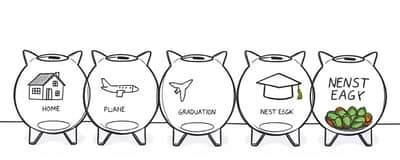Becoming a homeowner is a thrilling milestone filled with pride, comfort, and the promise of building a future in a space you truly call your own. Yet this journey comes with responsibilities that extend far beyond decorating walls and choosing paint swatches. From monthly mortgage payments to unexpected repairs, the expenses can quickly add up and strain even the best-laid financial plans.
In this comprehensive guide, we’ll explore practical, inspiring strategies that empower you to manage costs, build a safety net, and cultivate long-term savings. By taking proactive steps today, you’ll enjoy your home with confidence and financial peace of mind.
Set a Comprehensive Homeownership Budget
Creating a detailed household budget is the cornerstone of financial success as a new homeowner. Factor in all recurring and variable costs, then compare them to your income. This exercise reveals where to allocate funds, identify potential shortfalls, and find opportunities to cut back.
Below is an example of typical expenses you might encounter. Adjust these numbers based on your local market and personal preferences.
Use this table as a starting point and refine the numbers to reflect your specific situation. Regularly reviewing and updating your budget ensures you are always tracking every dollar you spend.
Reserve Funds for Essential Purchases
After moving in, you’ll need to furnish your home, purchase appliances, and stock up on cleaning supplies. These one-time or recurring purchases can quickly overwhelm your finances if left unplanned. A dedicated “move-in fund” prevents you from relying on high-interest credit.
To build this fund, estimate costs for furniture, a quality vacuum, basic tools, air filters, and other necessities. Save in a separate account or line item in your budget so you know exactly how much you have available. By preparing now, you’ll avoid using high interest credit cards when you need it most.
Focus on Maintenance and Repairs
Unlike renting, homeownership means you are responsible for all repairs and routine upkeep. Experts suggest budgeting 1-4% of your home’s value annually, or roughly $1 per square foot. For a 2,000 sq ft house, you could set aside about $2,000 each year just to cover general maintenance.
Major system upkeep also demands attention. For example, plan for annual HVAC service ($110–$200), water heater maintenance ($80–$100), gutter cleaning ($75–$150), and fireplace inspections ($125–$375). Remember that regular maintenance prevents costly disasters and extends the life of your home’s critical features.
Reduce Utility Costs
Energy bills represent a significant portion of recurring expenses. By implementing straightforward changes, you can save hundreds of dollars annually.
- Clean and replace lightbulbs with LED or other energy-efficient options.
- Use smart power strips to fully disconnect idle electronics.
- Set your water heater to 120°F to reduce energy use by up to 5% per 10-degree drop.
- Run ceiling fans counterclockwise in summer and clockwise in winter for optimal circulation.
- Keep your refrigerator stocked and rely on toaster ovens for small meals.
- Seal gaps with caulk or weatherstripping ($3–$30 investment saves 10–20% on bills).
- Consider insulation upgrades and plant shade trees to lower cooling costs.
These simple changes underscore how small changes yield big savings over time.
Lower Water and Waste Costs
Water conservation reduces both utility bills and environmental impact. Swapping out fixtures and adjusting routines can have immediate benefits.
- Install low-flow showerheads and faucet aerators to maintain pressure while using less water.
- Opt for showers over baths to minimize overall consumption.
- Place a water-filled bottle in your toilet tank to lower each flush volume.
- Run dishwashers and washing machines only when full, and use cold-water settings.
- Reduce dryer use by air-drying clothes when possible; always clean the lint trap.
By fostering conscious water-saving habits, you’ll save money and protect resources.
Be Smart with Insurance and Loans
Homeowners insurance and mortgage terms have a profound impact on your long-term finances. Each renewal, shop around and compare rates to find the best coverage for the lowest premium. Likewise, if market rates drop, refinancing can cut thousands of dollars off your interest costs.
For instance, reducing your rate from 7% to 6.5% on a 15-year, $100,000 mortgage could save more than $5,000 in interest. Additionally, consider a home warranty to cover major appliance or system repairs, giving you refinancing can save thousands or peace of mind when unexpected breakdowns occur.
Trim Non-Essential Spending
It’s easy to overlook ongoing expenses that add little value to daily life. By evaluating and trimming these costs, you’ll free up cash for savings or essential home investments.
- Review and cancel unused streaming subscriptions and membership services.
- Choose generic or store-brand household items over premium alternatives.
- Use coupons, cashback apps, and store loyalty programs for groceries and necessities.
- Swap paper towels for reusable cloth napkins to reduce waste and cost.
Implementing these measures will help you maintain a lean budget without sacrificing comfort.
Do Regular Energy and Expense Audits
Conducting periodic audits illuminates hidden savings and potential errors. Many utility providers offer low-cost or free home energy audits that identify insulation issues, air leaks, and inefficient appliances. Meanwhile, scrutinize your bills and statements for mistakes or better deals.
By auditing your expenses boosts awareness, you can negotiate rates, switch providers, or adopt new technologies that lower ongoing costs.
DIY Where Appropriate
Tackling simple home projects yourself not only saves labor costs but also instills confidence in your ability to maintain and improve your property. Start with minor repairs like replacing faucets, patching drywall, or updating light fixtures—there are countless online tutorials available.
If you prefer chemical-free cleaning, make your own solutions with vinegar, lemon juice, and baking soda. This approach demonstrates empowering yourself with new skills while cutting supply expenses.
Prepare for Unexpected Costs
No matter how thorough your planning, surprises will occur. Establish a dedicated emergency fund for home-related expenses so you can respond promptly to leaks, electrical issues, or appliance failures without derailing your overall budget.
Consistent contributions to this fund, combined with diligent upkeep, ensure that unexpected expenses can derail your plans and safeguard your home investment.
By embracing these strategies, you’ll transform your new house into a thriving, budget-friendly home. Not only will you feel the joy of comfortable living, but you’ll also build lasting wealth and resilience. Start implementing these tips today and watch how smart choices can lead to a more secure and prosperous future in your new home.
References
- https://www.americanfinancing.net/saving-money/budgeting-tips-for-new-homeowners
- https://www.houselogic.com/save-money-add-value/save-on-utilities/how-to-save-money-each-month/
- https://www.eaton.bank/Resources/Meet-Eaton/News/5-top-tips-to-save-money-as-a-homeowner
- https://www.efile.com/money-saving-tips-for-home-house-utilities-shopping-food/
- https://www.seasonsfcu.org/blog/7-tips-on-how-to-save-for-your-first-home/
- https://www.amfam.com/resources/articles/at-home/average-home-maintenance-costs
- https://americasavesforyoungworkers.amsv.scandiaprd.com/resource-center/insights/54-ways-to-save-money/
- https://www.zionsbank.com/personal/community/personal-finance-feed/5-money-saving-tips-every-new-homeowner-should-consider/














